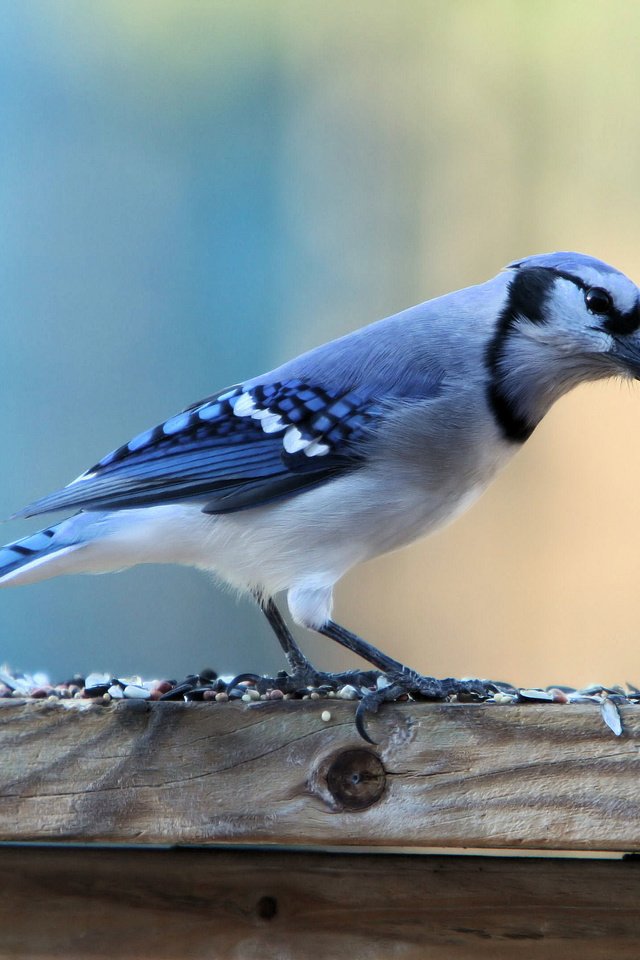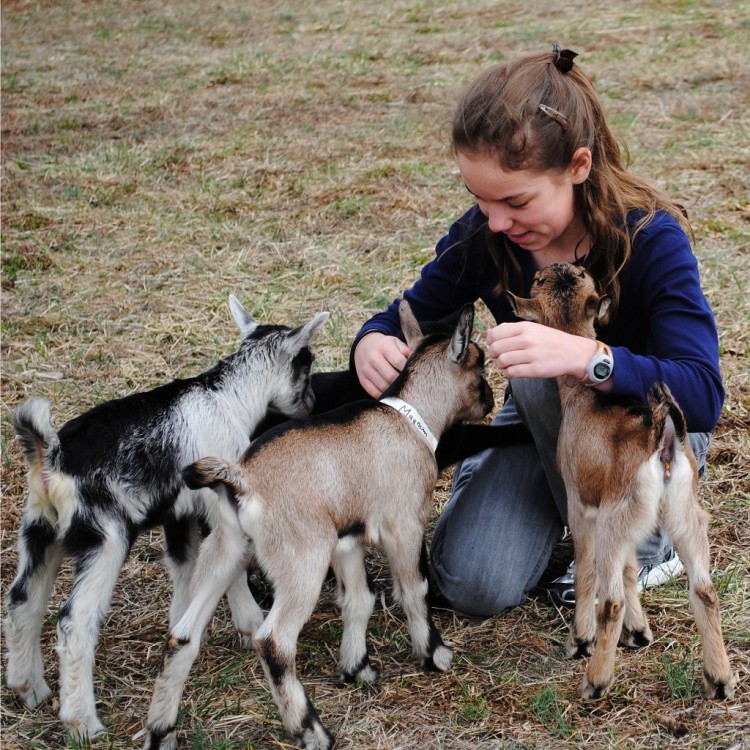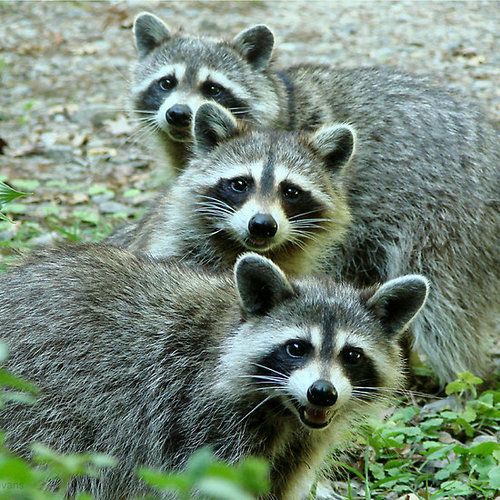Baby blue jay bird food
What Do Baby Blue Jays Eat?
by Jesse
Blue jays are an easily recognizable, perhaps even iconic, songbird. Their large size, blue feathers, and distinctive call mean that just about anyone can recognize a blue jay. Adults can often be seen eating large acorns, and are drawn to feeders full of things like peanuts and sunflower seeds. They also have been known to occasionally raid the nests of other birds, eating their eggs and chicks. So we know what adult blue jays eat, but what do baby blue jays eat?
What Do Baby Blue Jays Eat?
As with most birds, baby blue jays eat more or less the same things that their parents eat. Adult blue jays bring nuts, seeds, insects and small animals back to the nest for their chicks. For at least six weeks after hatching, the chicks are totally dependent on their parents to bring them food, and the parents bring whatever they can find.
Do Baby Blue Jays Eat Worms?
If their parents bring them a worm, they’ll eat it. Caterpillars and seeds are probably more common, but earthworms certainly make their way into many baby blue jay’s diets. Worms are a little hard to find, since they’re usually underground, but occasionally a heavy rain or human activity brings a bunch of worms to the surface, and the blue jays will definitely go after them. The parents must also take size into consideration, very young nestlings often cannot yet eat large earthworms.
How to Feed Baby Blue Jays
If you need to feed a baby blue jay, use either moist dog/cat food or commercially sold baby bird food, fed through an eye dropper. However in general you should not attempt to do this yourself, and we will talk about why below.
If you’ve found a nest with baby blue jays you suspect is abandoned, don’t jump to any quick conclusions. In most cases of a nest with begging babies, the adults are nearby finding food and will come back periodically to feed the young. Male and female blue jays both take turns feeding the young, however it has been observed that males may often do the majority of the feeding.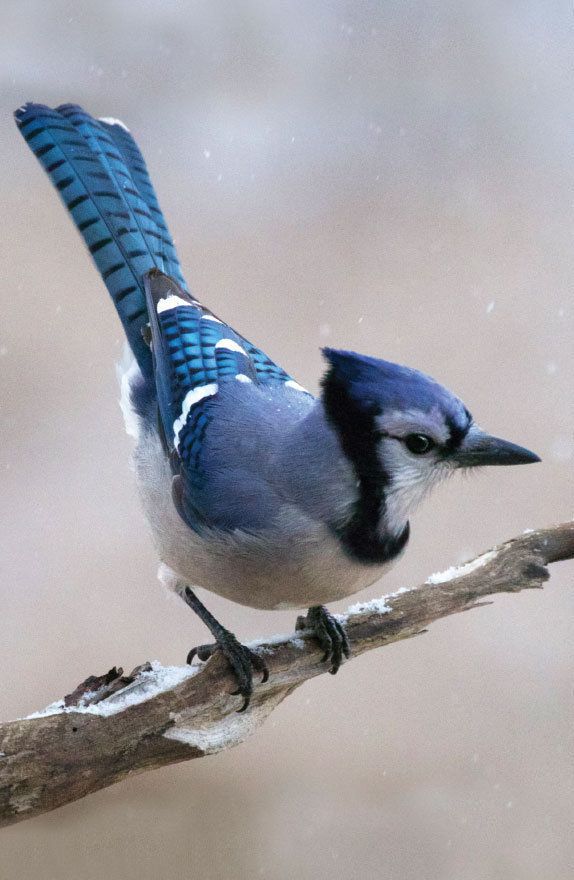
Some feedings can be very quick, and the adults will only stop by for a minute before leaving to find food again. Because you could easily miss this quick process, you would have to watch a nest non-stop (not a few minutes at a time) for at least a few hours before you could determine if the babies have potentially been abandoned.
Contacting a Wildlife Rehab Expert
If you have determined that the baby blue jays do need help, it is important to contact a qualified bird rehabber. In many states, only certified rehab specialists are allowed to be in possession of wild birds. Not to mention they are trained in exactly how to care for them.
Care of baby birds can be very tricky. Many nestlings need to be fed every 20 minutes or so for 12 to 14 hours a day! That is a lot of constant time and attention. They also need balanced food with enough protein and nutrients to grow properly. This is why the knowledge and expertise of a rehabber is their best bet for survival.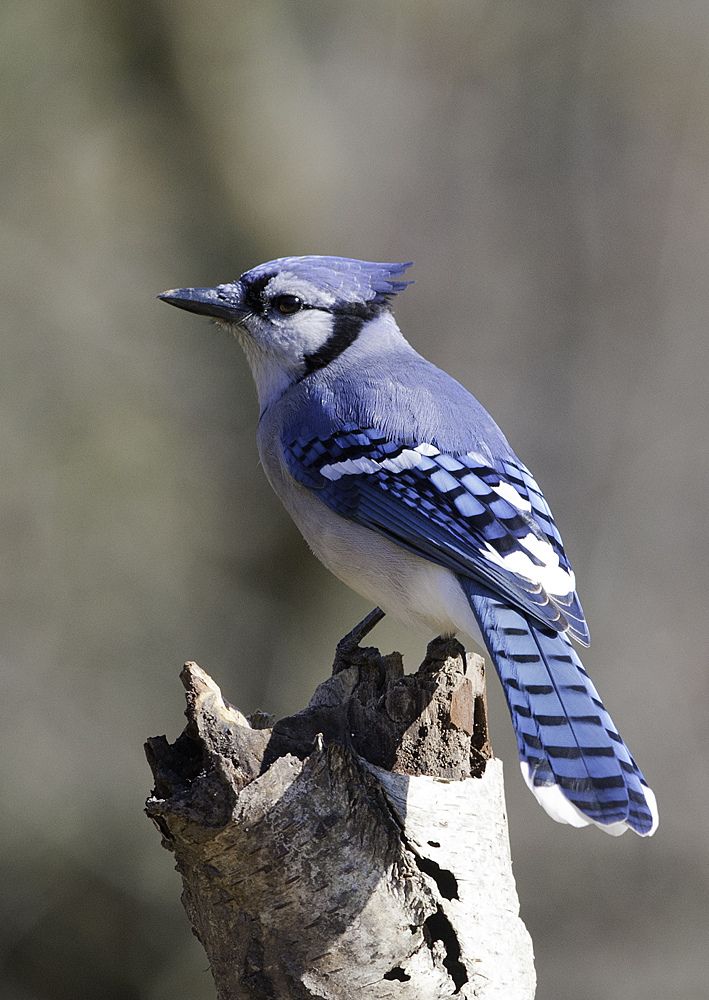
If you get in touch with a rehabber that isn’t able to take the birds right away, they may instruct you on how to care for them until they can pick them up. For the short term, dog or cat food (moist, fed through a dropper), or specialty baby bird food mix, is often used.
To find a rehabber near you, Google search the name of your state plus “wildlife rehabilitation”, or check your states department of the environment page for a list of licensed rehabbers.
Do Blue Jays Really Raid Other Bird’s Nests?
This is a widely held belief, and it’s not entirely clear why this is so commonly believed. In fact, there’s not really much evidence to suggest that blue jays are nest-raiders. In a study performed on blue jay diet that looked at their stomach contents, researchers found remains of eggs or nestlings in only 1% of adult blue jays, which hardly makes them stand out as “egg snatchers” over other birds.
While blue jays are not big nest-raiders themselves, they have to be on guard against other birds.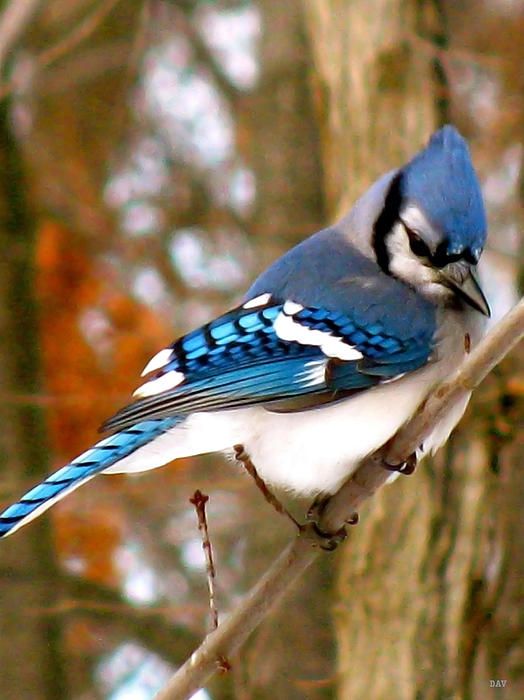 Crows, especially, will eat blue jay eggs or kill and eat their chicks.
Crows, especially, will eat blue jay eggs or kill and eat their chicks.
Why Did a Blue Jay Attack Me?
Despite the fact that they are somewhat small in the world of wildlife, blue jays are surprisingly aggressive and fearless. Plenty of people have been attacked by angry blue jays, and most of them were just walking down the street or in their yard when it happened. Fortunately blue jays aren’t really capable of doing any damage, but it’s still an unnerving experience.
In all likelihood, if you’re dive bombed by a blue jay, you were walking too close to their nest. Blue jays like to build their nests high up in trees and they hide them well, so it’s rare to spot them. The parents, though, are fierce protectors and won’t hesitate to chase of potential predators.
This is especially true around May and June, when the babies are just learning to fly. This is when they’re at their most vulnerable, and the adults get extra protective of them. That’s when most blue jay attacks occur.
Do Blue Jays Like Acorns?
Acorns are a favorite food of blue jays, although they’re a bit too big for the babies to eat. That’s fine, since by the time acorns are available the babies will have left the nest and grown to adult size. Acorns are a favorite for blue jays, and each fall adult birds will hide somewhere between 3,000 and 5,000 acorns in the ground, saving them for the winter months.
In fact, blue jays are credited with spreading oak forests across the U.S. While they remember where they put most of those acorns, they always forget some of them, which means that each blue jay ends up planting a bunch of oak trees every fall.
Conclusion
Baby blue jays eat just about anything their parents bring them. Mostly, that means seeds, nuts, and insects. If you find yourself caring for baby blue jays that have been abandoned while waiting for help from a rehabber, pet food or commercially sold baby bird food will help to meet their nutritional needs.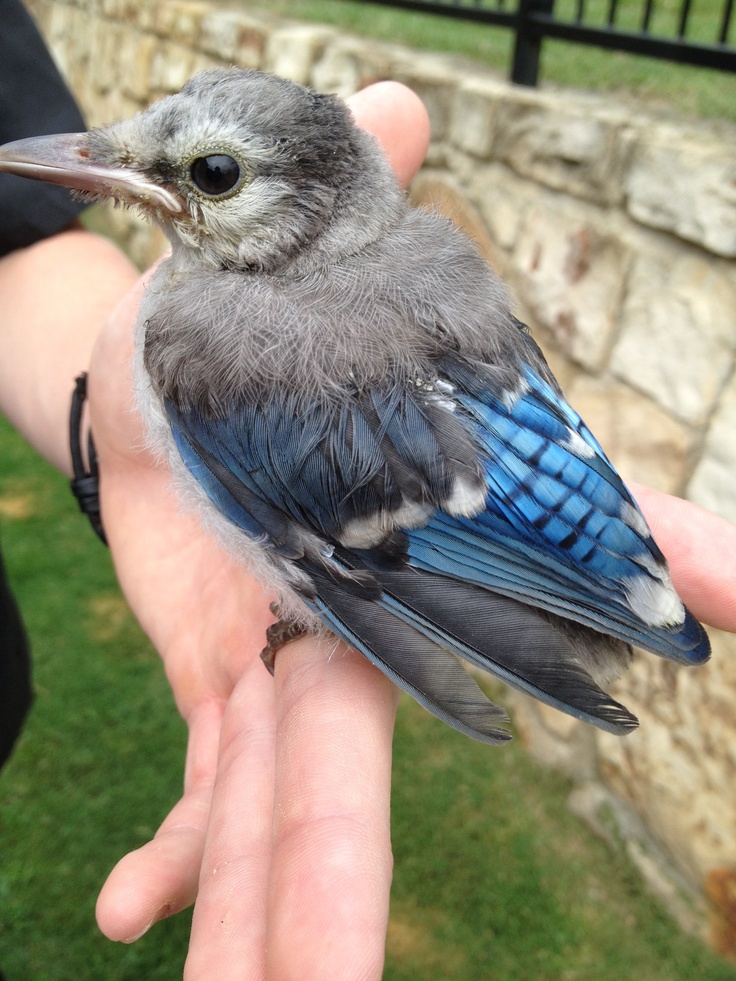
About Jesse
Jesse enjoys bird watching and feeding birds in his backyard, learning about the different species, and sharing his knowledge and experiences.
...
How to Feed Wild Baby Blue Jays
By Laura Wallace Henderson | Updated September 26, 2017Things You'll Need
Blue jay food
Fresh berries
Raw nuts
Canned pet food
Eye dropper
Plastic drinking straw
Blue jays are brightly colored, blue birds known for their unusual color. Blue jays are commonly found in the central and eastern United States and in southern Canada. Blue jays like to live in clearings, near wooded areas and buildings. Baby blue jays normally stay with their parents for their first two months of life. They are often able to start finding their own food when they are just a few weeks of age. Very young blue jays require assistance when abandoned by their parents.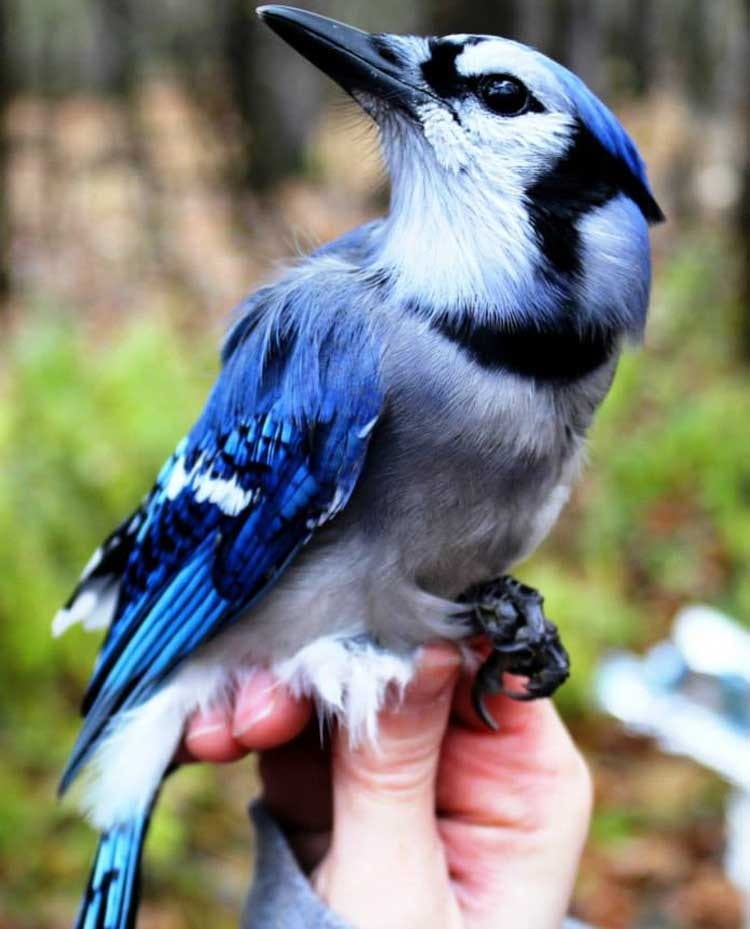 You may need to assist a baby blue jay by feeding him until he is old enough to feed himself.
You may need to assist a baby blue jay by feeding him until he is old enough to feed himself.
i Jupiterimages/Comstock/Getty Images
Check with your local farm supply store for commercial blue jay food. Some pet stores also carry prepared blue jay food. Purchase a small quantity of this ready-made food to try on your new baby bird. Soften this food with water for feeding to immature birds. If you cannot find packaged blue jay food, make your own blend from scratch.
i Jupiterimages/Photos.com/Getty Images
Select a variety of fresh food for preparing your own blend of baby blue jay food. These birds are omnivorous, meaning they consume food from plant and meat sources. Select raw, unsalted nuts and soft grains for your rescued baby bird. Berries should be fresh or frozen, not canned. Purchase produce that has not been subject to chemical processing. Thoroughly wash all fresh produce. Use canned cat or dog food as an animal protein source for your baby blue jay.
i Ryan McVay/Photodisc/Getty Images
Select an object shaped like the beak of a mother blue jay.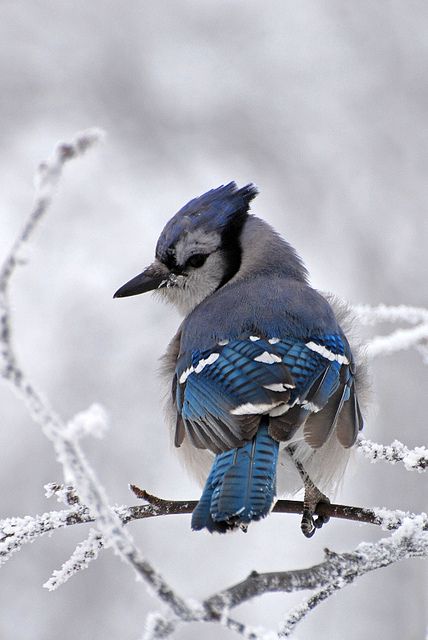 A pointed eye dropper works for this purpose. You can also trim the tip of a plastic drinking straw into a slight point to use to feed the baby bird. Grind your ingredients into a smooth gruel. Add a little water to produce a soft consistency. Place a small amount on the tip of your straw or dropper. Baby birds open their mouths very widely when it is time to eat. Gently and quickly press the food to the back of the baby’s open mouth. Do not press down the throat. Allow the baby blue jay sufficient time to swallow the food.
A pointed eye dropper works for this purpose. You can also trim the tip of a plastic drinking straw into a slight point to use to feed the baby bird. Grind your ingredients into a smooth gruel. Add a little water to produce a soft consistency. Place a small amount on the tip of your straw or dropper. Baby birds open their mouths very widely when it is time to eat. Gently and quickly press the food to the back of the baby’s open mouth. Do not press down the throat. Allow the baby blue jay sufficient time to swallow the food.
Be prepared to feed the baby bird often. Depending on his age, he may need to eat every two to three hours.
References
- University of Michigan, Museum of Zoology
- National Park Service
- Orphaned and Injured Birds – The Center for Rehabilitation of Wildlife
Photo Credits
Writer Bio
Laura Wallace Henderson, a professional freelance writer, began writing in 1989. Her articles appear online at Biz Mojo, Walden University and various other websites.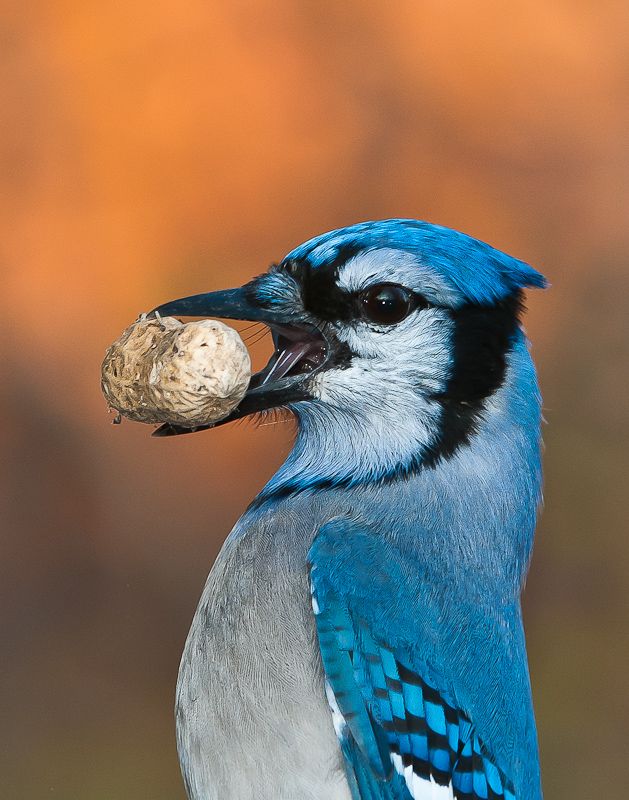 She has served as the co-editor for "Kansas Women: Focus on Health." She continues to empower and encourage women everywhere by promoting health, career growth and business management skills.
She has served as the co-editor for "Kansas Women: Focus on Health." She continues to empower and encourage women everywhere by promoting health, career growth and business management skills.
description of the bird, where it lives, what it eats
The blue jay is a beautiful songbird that comes from far abroad. This bird stands out for its cunning, cunning and artistry. She easily repeats a variety of sounds. This helps her to distract other birds from the food she finds.
Contents
- 1 Blue jay: description
- 1.1 Appearance
- 1.2 Lifestyle and character
- 1.3 How long do blue jays live
- 1.4 where
- 1.5 lives
- 1.6. Reproduction and offspring
- 1.7 Natural enemies
- 2 status and population
Blue jay: Description
9000 9000 9000 9000 Blue jet together with a stelly black soyge members of the Blue Jay (Cyanocitta) genus, which is considered part of the Corvidae family. A characteristic feature of such a bird is a long tuft of deep blue color. It was he who became the reason that the jay is called crested or blue. It is also sometimes called the North American jay, which refers to the habitat of this bird.
A characteristic feature of such a bird is a long tuft of deep blue color. It was he who became the reason that the jay is called crested or blue. It is also sometimes called the North American jay, which refers to the habitat of this bird. Appearance
These birds have pronounced sexual dimorphism: females are smaller than males. However, their plumage color is the same - the upper plumage has a beautiful rich blue tint.
Interesting fact! Anyone who has ever seen a blue jay very close, they say that in fact the blue color is only an optical illusion. After the rays of light hit the feathers, they are refracted in the internal structure, as a result of which a blue glow appears. But as soon as the pen falls out, the blue tint immediately disappears.
The size of adults is about 25–29 centimeters, while the length of the tail is from 11 to 13 centimeters. The maximum weight of such a bird is 70-100 grams.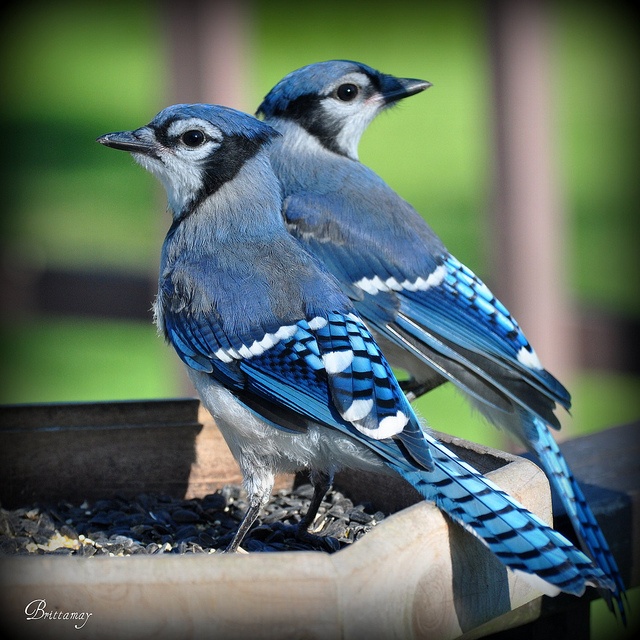 Its wingspan can reach from 34 to 43 cm. The tuft can be painted in deep blue or bluish-violet. Feathers located under the tuft are black in color. The beak, bridle and annular stroke around the eyes have the same shade. The lower part of the body, cheeks and throat are painted in a whitish-gray color.
Its wingspan can reach from 34 to 43 cm. The tuft can be painted in deep blue or bluish-violet. Feathers located under the tuft are black in color. The beak, bridle and annular stroke around the eyes have the same shade. The lower part of the body, cheeks and throat are painted in a whitish-gray color.
The edge of the tail is painted white. At the same time, snow-white spots are located on the tail or wings. Flying and tail feathers crossed by transversely arranged black stripes have a blue color. The eyes of such a jay are shiny, rich black in color, and the paws are of a dark gray hue. It has a powerful beak, thanks to which it splits seeds that have a very strong shell.
Blue jay
Watch this video on YouTube
Lifestyle and character
Once upon a time, M. Twain joked that blue jays are considered birds only because they have feathers and do not go to church. And so they are very similar to humans: cunning, able to easily deceive and know how to swear.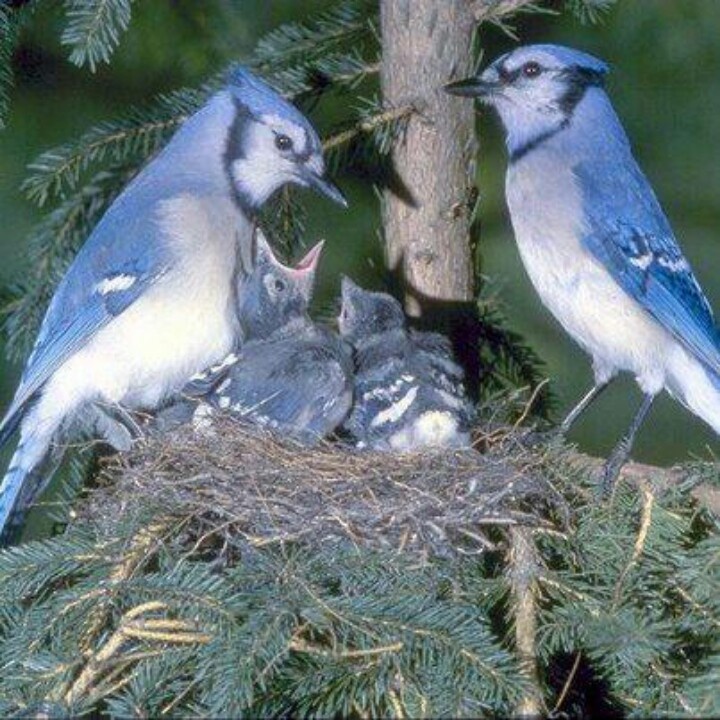
Interesting fact! The jay often imitates the call of a hawk, thanks to which it easily scares away other birds, which include starlings, woodpeckers and Florida scrub jays, from the found food. She also scares away gray squirrels with her cry. However, such a trick scares off competitors for a short time, and soon they return to the forest feeder again.
Blue jays have a very busy social life. They form both pair unions and family groups, and not very large flocks. Such birds communicate with each other with the help of a voice, body language can also be involved (with the help of a tuft). If the bird is worried or very surprised, then its feathers on the crest rush forward. If the jay is angry, then her tuft takes a vertical position. And in a frightened bird, the crest is ruffled and somewhat resembles a brush.
Such a bird is an excellent imitator. She can imitate a variety of sounds that she once heard: from pleasant melodies to the creaking of an old door. She can scream loudly (as birds of prey do), whistle melodies, meow, imitate the chime of bells, bleat and even bark. A caged bird can quickly learn to talk like a human. And jays are able to squeal when they see an approaching danger. Thus, they not only inform all the inhabitants of the forest about the approaching enemy, but can also unite a large number of birds to fight back.
She can scream loudly (as birds of prey do), whistle melodies, meow, imitate the chime of bells, bleat and even bark. A caged bird can quickly learn to talk like a human. And jays are able to squeal when they see an approaching danger. Thus, they not only inform all the inhabitants of the forest about the approaching enemy, but can also unite a large number of birds to fight back.
In adults, molting is observed in July-September, and in young ones - at the end of the summer period. Like most birds, during molting, jays resort to procedures that are also called anting: they stuff live ants under their feathers or arrange a bath in an anthill. This allows the jays to clear themselves of pests. Crested jays living in the northern part of their species range fly to the southern regions for wintering. As a rule, the flight takes place during daylight hours, and for this, birds stray into small (from 5 to 50 birds) or large (maximum 3 thousand birds) flocks.
How long do blue jays live
The average life expectancy of such a bird varies from 10 to 18 years.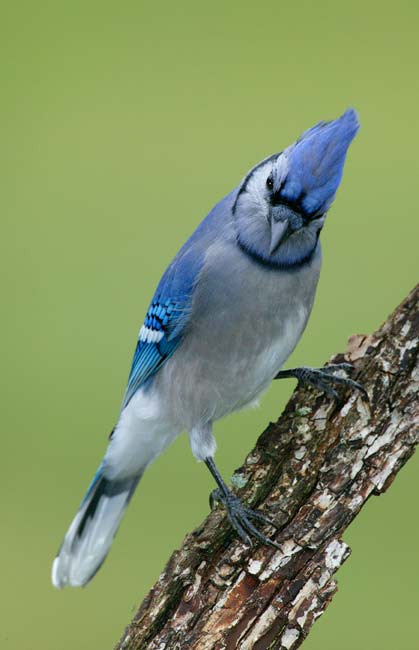
Where it lives
The natural habitat of the blue jay is North America, while it inhabited almost half of this continent. Moreover, it is most widely distributed in Canada and the eastern part of the United States. Where the jay comes from, it is called Blue Jay. Its habitat extends to the Gulf of Mexico. In western North America, the range of the blue jay is closely intertwined with that of the Steller's black-headed blue jay.
To date, scientists have described four subspecies of the blue jay, which, among other differences, differ in habitat:
- Cyanocitta cristata cyanotephra - this subspecies lives in Texas, Oklahoma, Colorado, Wyoming, Kansas and Nebraska;
- Cyanocitta cristata semplei is an inhabitant of northern Florida;
- Cyanocitta cristata bromia - representatives of this subspecies live in Northern Canada, Missouri, Newfoundland, North Dakota and Nebraska;
- Cyanocitta cristata cristata - Found in Texas, Illinois, Florida, North Carolina, Tennessee, Missouri, Virginia and Kentucky.

This jay most often settles in mixed (beech and oak), as well as in deciduous forests. Less often, it settles in dense thickets of shrubs or in pine forests, which is most often observed in the western part of the range. This bird is not shy, and it is not afraid of people. Therefore, often its nests can be seen in residential areas (in gardens and parks). Individuals living in the southern part of the range are smaller in comparison with their "northern" relatives.
What it eats
The blue jay is an omnivore. In addition, she is very brazen, so it will not be difficult for her to take away food from other birds. Also, this bird is completely unsqueamish, so it can eat carrion.
Approximately 22 percent of the diet consists of food of animal origin, and 78 percent of plant foods. And these are:
- fruits and seeds;
- caterpillars and grasshoppers;
- birds' eggs and birds themselves;
- berries and acorns;
- beech nuts;
- centipedes, spiders and beetles;
- lizards, frogs and mice.
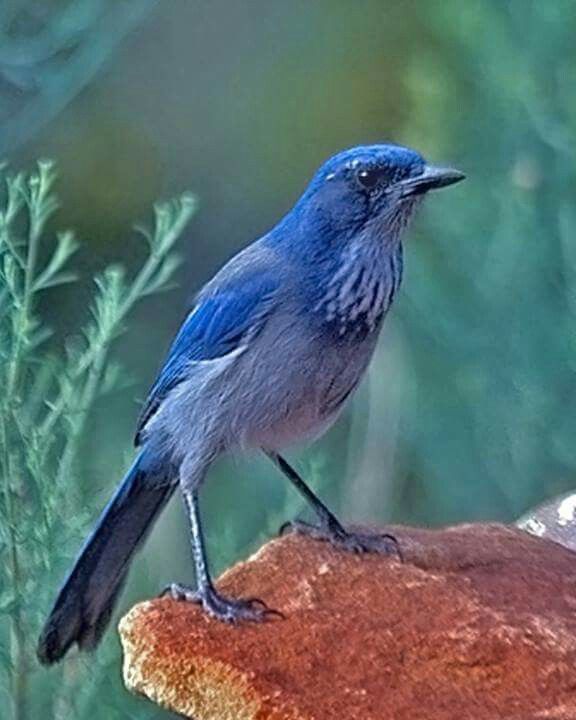
Those blue jays that don't fly away in winter make food supplies for themselves. To do this, they bury seeds and acorns in the soil and put them under the fallen leaves or under the bark.
Interesting fact! One jay can carry 5 acorns at once. 3 of them are in her crop, 1 in her mouth, and 1 more in her beak. During the autumn period, one bird can prepare from 3 to 5 thousand acorns.
Blue jay eating
Watch this video on YouTube
Reproduction and offspring
Blue jay mating season starts in spring when the weather is warm. In the northern part of the range, the mating season is most often observed from May to June. In individuals living in the southern part of the range, reproduction is observed 2 times during the year. At this time the usually noisy birds become very quiet as they try to hide the nest location from predators.
Both parents take part in the “building” of the nest.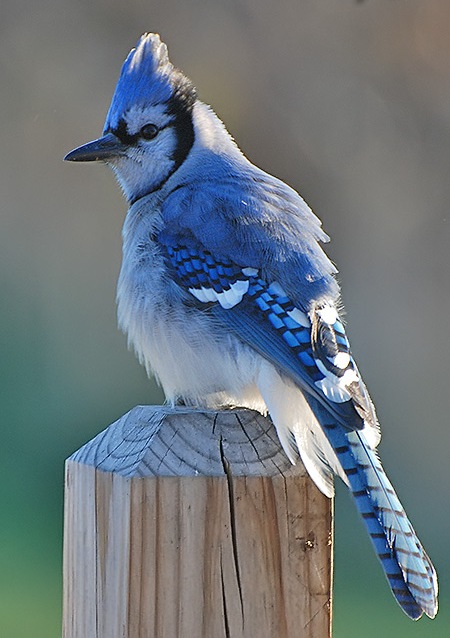 They make a frame from rods that break off from trees. As a rule, they choose deciduous or coniferous trees for arranging nests. They make them in the fork of side branches at a height of about 3-10 meters.
They make a frame from rods that break off from trees. As a rule, they choose deciduous or coniferous trees for arranging nests. They make them in the fork of side branches at a height of about 3-10 meters.
The average height of the nest frame is 10 centimeters, while its diameter reaches about 20 centimeters. To compact it, jays use branches and roots found near the nesting site (near trees or in a ditch). Jays often resort to "cementing" building materials, using clay or soil for this. At the bottom they lay paper, foliage, grass, wool, lichens, rags.
Until the construction of the main nest is completed, the birds make several additional nests as part of the mating ritual. In addition, the male feeds the female during courtship. To do this, the female sits on a branch and behaves like a hungry chick. The male flies up to her and gives food.
Interesting fact! The jay can lay 2–7 eggs at a time, pale blue with brownish or greenish yellow spots.
They hatch eggs from 16 to 18 days. In the event that a nest is discovered by a predator, the female can fly away from it forever.
Newly hatched chicks are blind and weak. Therefore, parents have to get them food, provide protection, clean and heat. The opening of the eyes occurs on the 5th day, and already on the 8th day the first plumage begins to break through.
After the chicks are 8-12 days old, the female goes in search of food. When there are 1–3 days left before independent departure, the young growth fearlessly jumps from branch to branch. But at the same time, they do not move away from the nest by more than 4.5 meters. On days 17–21, the chicks already leave their native nest, but at the same time they move away from it by a maximum of 20 meters. The grown chicks are near their parents until the onset of the autumn period. By the onset of winter, family ties will already be cut off completely.
Natural enemies
Blue jays have very few natural enemies.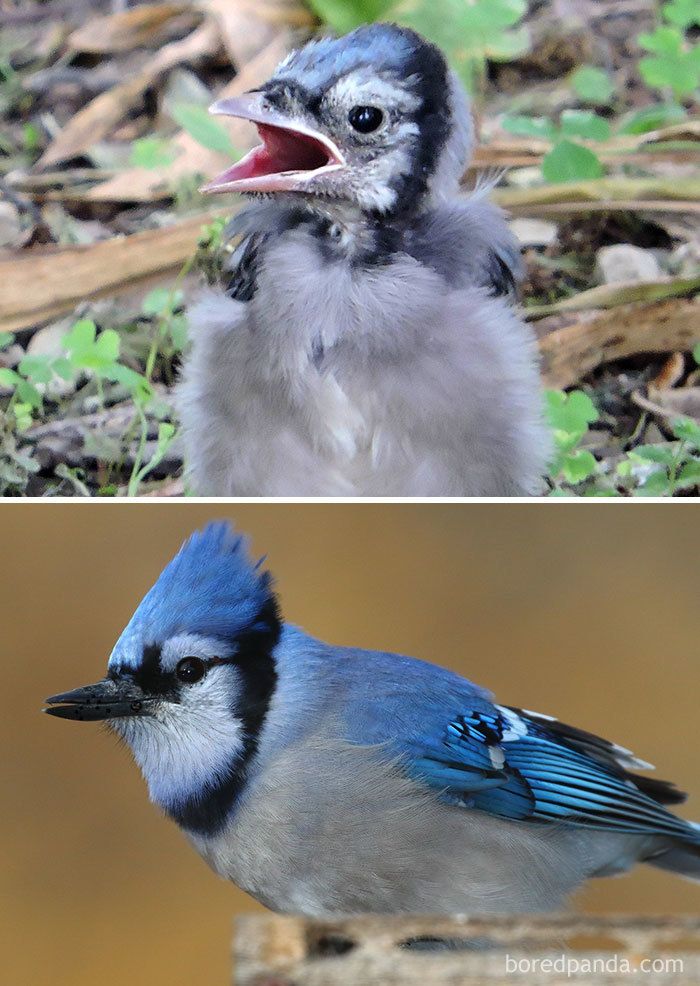 As a rule, they include large owls and falcons.
As a rule, they include large owls and falcons.
Species status and population
Crested jays are useful birds. They contribute to the extermination of forest pests (for example, caterpillars, weevils and May beetles), and they are also distributors of acorns and seeds. However, jays can also harm nature. The fact is that they contribute to the ruin of the nests of small birds, pecking out eggs in the nests, and also killing defenseless chicks.
The blue jay is listed as a species of least concern in the Red List of the International Union for Conservation of Nature. The fact is that today its existence is not threatened by anything.
Jay - interesting facts
Watch this video on YouTube
Blue Jay (Blue Jay) - Photos from America - LiveJournal
Especially for "bird" Thursday.
Mark Twain once joked that blue jays are called birds
just because they have plumage and don't go to church.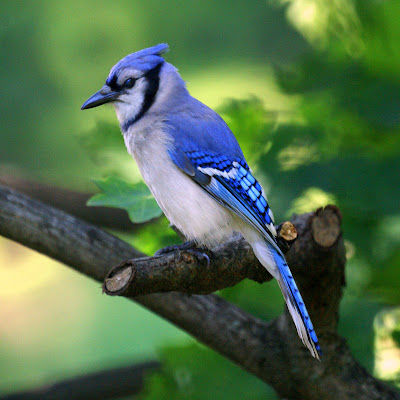
Otherwise, they strongly resemble people: they are just as cunning,
swear and deceive at every turn.
The homeland of the blue jay is North America. Birds occupy
almost half of the North American continent, inhabiting
mainly the eastern regions of the USA and Canada.
A distinctive feature of this species is a long crest, due to which the bird is called
blue and crested. The crest can be both bright blue,
and purple-blue. The North American jay has blue
tail feathers and flight feathers that are crossed with black transverse stripes.
The bird has black and shiny eyes, dark gray paws and a strong beak,
with which it easily splits seeds enclosed in a hard
shell.
In the photo, our frequent guest, she obviously does not have enough bird food and she
drags food from the squirrel feeder.
The jay often imitates the loud call of a hawk to ward off competitors, including woodpeckers, starlings and squirrels, from the feeder
.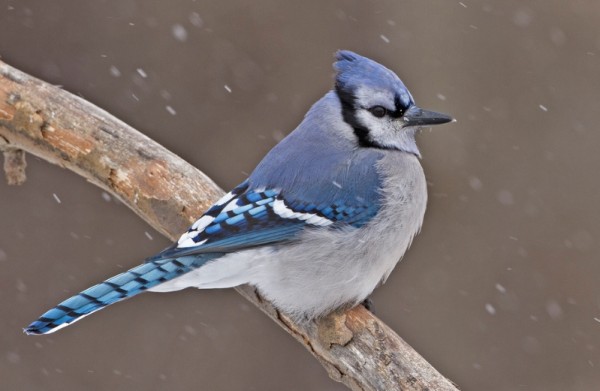 True, this
True, this
trick does not last long: after a short time, the misled
neighbors return.
The Blue Jay is an unsurpassed imitator. In her singing
arsenal are numerous sounds overheard in nature,
ranging from quiet melodies to the creak of a rusty pump.
Jay is able to whistle, squawk (imitating
birds of prey), imitate the chime of bells, chirp (warning of
danger), bark, meow and bleat. Caged jay
quickly learns to reproduce human speech.
The North American jay prefers to settle in
deciduous forests, more often in mixed forests. It is not afraid of humans and builds nests
in residential areas, in park and garden areas.
The female lays 2 to 7 eggs, incubating them for 16–18 days.
Crested jays have an active social life, birds form family groups
or small flocks, communicating with each other by voice or body language
, or rather, with the help of their tuft. Jay
bristles when frightened, like a brush for washing dishes.